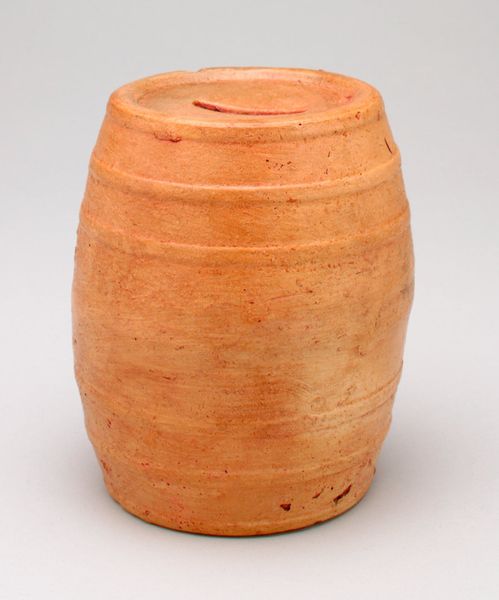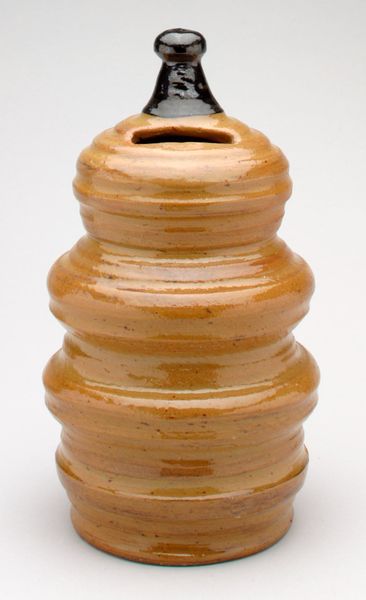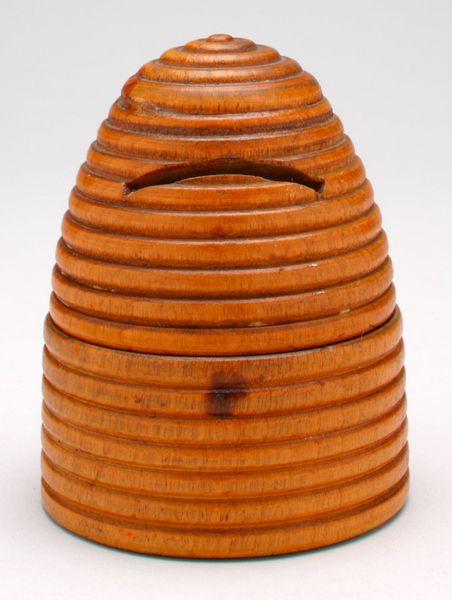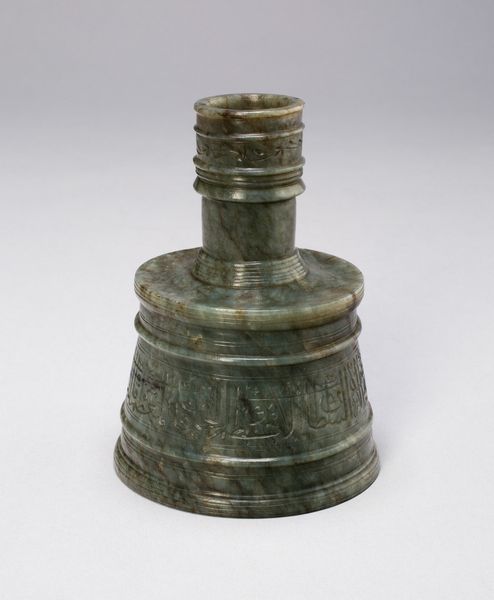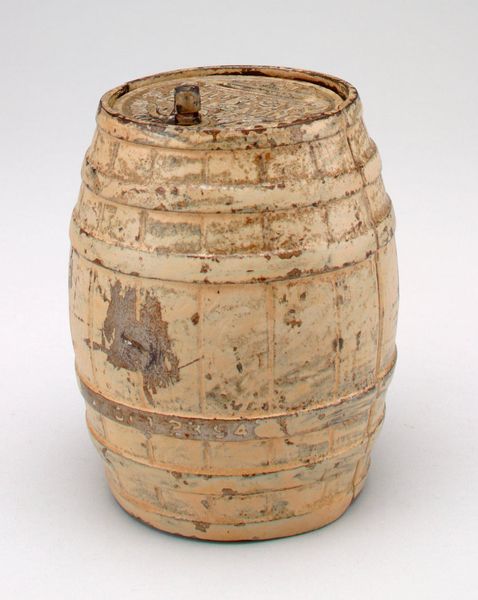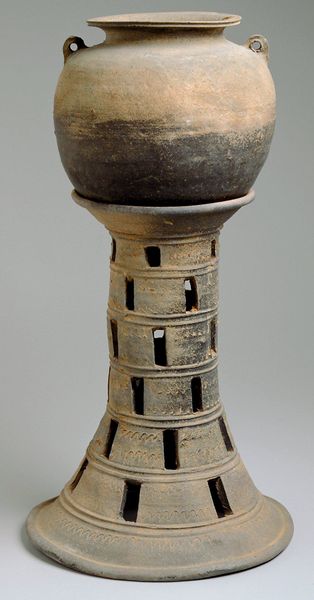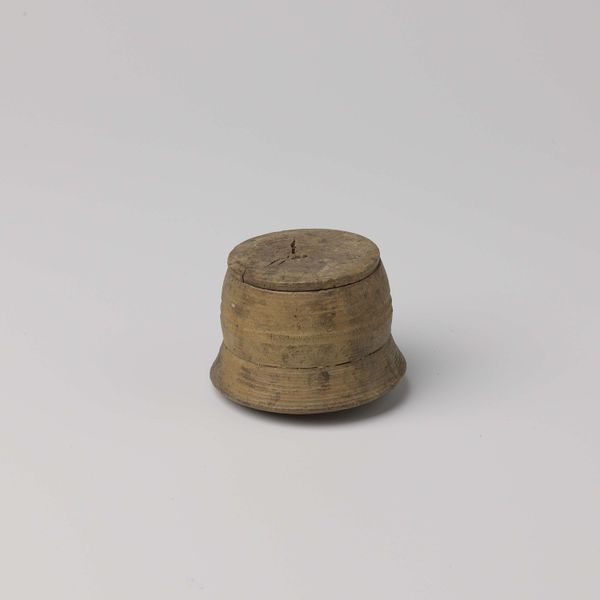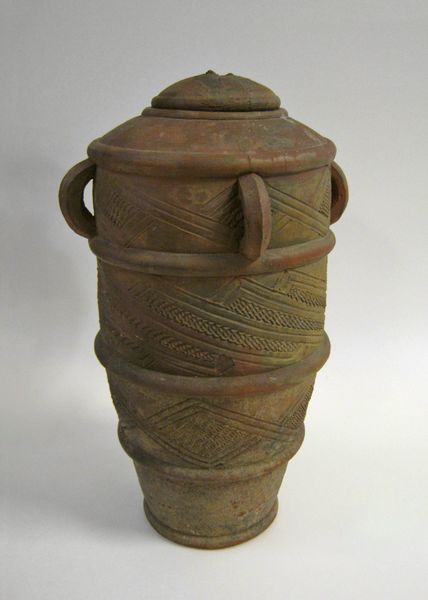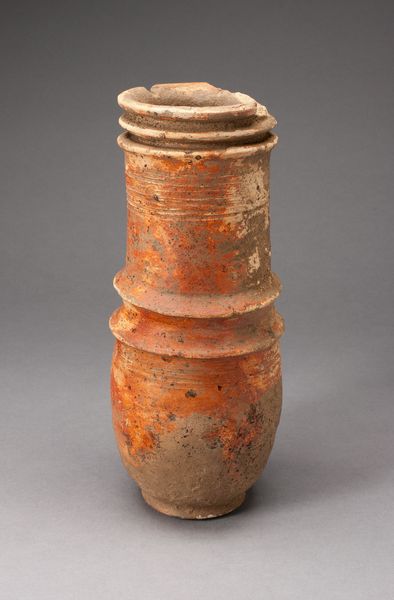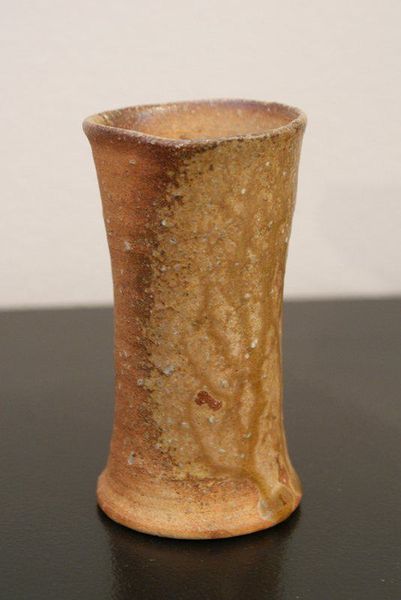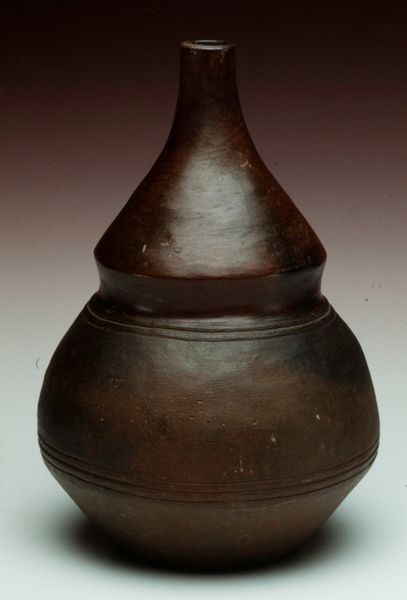
ceramic, sculpture, wood
#
ceramic
#
stoneware
#
sculpture
#
ceramic
#
wood
Dimensions: 2 7/8 x 1 13/16 x 1 13/16 in. (7.3 x 4.6 x 4.6 cm)
Copyright: Public Domain
Curator: Here we have what's known as a "Barrel Still Bank," estimated to be from the 20th century, created by an anonymous maker. It's located here at the Minneapolis Institute of Art. Editor: It’s such a simple, unassuming form, isn’t it? A miniature barrel crafted from what appears to be unvarnished wood. There's a naive quality that feels… nostalgic. Curator: The barrel form, of course, taps into deep veins of cultural symbolism. Barrels were essential for preserving and transporting commodities – everything from grains to… less savory goods. Its mundane exterior, the carved-in details... This could function as a simulacrum, of more elaborate, industrial production and storage practices, distilled into a bank? Editor: Right, there's that suggestion of hidden contents, like distilled spirits. But the object also materializes, literally, values concerning labour and monetary value itself. The unpolished, handmade nature implies that there's something inherently industrious, and down-to-earth associated with frugality here, the daily work involved in accruing pennies! Curator: Certainly. The symbolism intertwines personal and social histories of money, economy, industry and values. A miniature symbol meant to instill values of domestic virtue? What of how commodity goods that might once be transported in barrels – molasses, oils, spirits – were purchased at local marketplaces? This object carries some of the weight of a more tactile economy than that which many encounter today, for whom banking is immaterial and ephemeral. Editor: And considering the era, who produced and consumed items transported in barrels, or engaged in forms of savings at all? Perhaps that knowledge shapes the object's continued significance even now. Curator: Indeed. As a visual embodiment of domestic and political economic narratives and processes, this simple piece encourages us to consider what lies beneath surfaces, materially, and psychologically. Editor: And seeing the process of making—simple carved-wood— makes it all the more compelling.
Comments
No comments
Be the first to comment and join the conversation on the ultimate creative platform.
